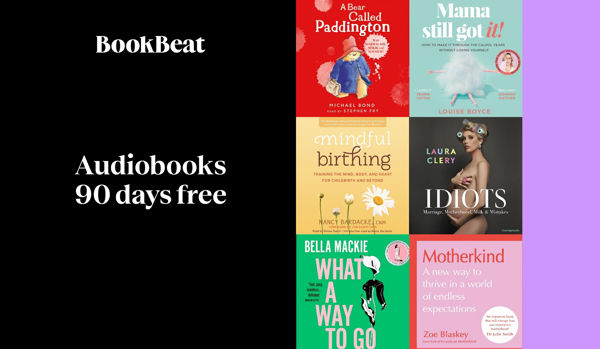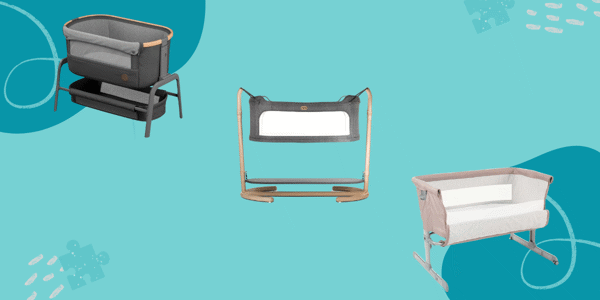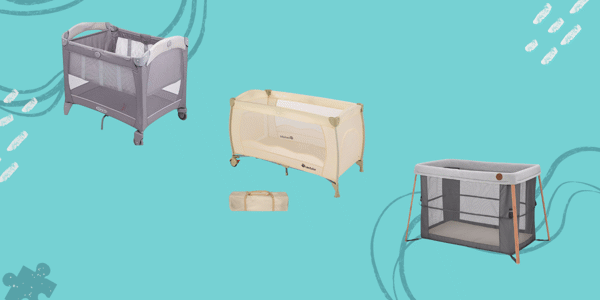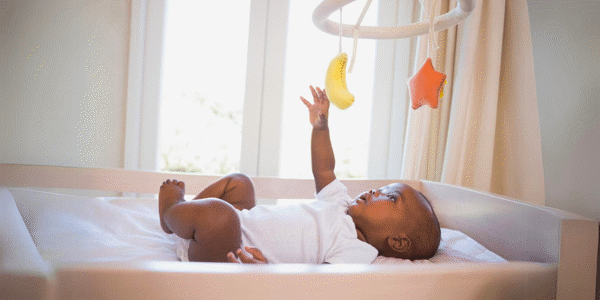After seeing those exciting blue lines of a positive pregnancy test, buying a cot is probably considered the next big step in your parenting journey - congrats! But, with so many different options, styles, and sizes to choose from, plus costs and safety concerns to consider, too, buying the right cot may leave you feeling frazzled and in need of a good nap!
That’s why we’ve put together this handy guide on what to look for when buying your new cot so you can be confident you’re making the right decision.
When Should You Buy a Cot?
It’s entirely up to you when you buy your cot! You could get it as soon as you find out you’re expecting, wait right up until your due date, or even wait until your baby is a few months old.
As long as your newborn has a safe flat surface to sleep on (The Lullaby Trust is a great resource for guidance on this), a traditional cot isn’t needed right away.
You could always opt for something else, like a Moses basket or bassinet until you’re ready to make the all-important cot purchase.
If You Buy a Moses Basket Instead…
If you’re waiting to buy a cot until a little later, make sure you get one as soon as your baby is sitting up, usually around the 9-month mark. This is to make sure they don’t tip their Moses basket with their newfound movement skills or fall out of their bassinet.
5 Important Things to Consider When Buying a Cot
If you’ve decided to buy a cot, you need to ensure your choice is safe, durable, and, of course, comfortable! You also need to consider 5 important things when buying a cot:
1. Cot Safety
When buying your new cot, especially if it’s secondhand, you need to make sure it conforms to BS EN 716-2:2008. This ensures your cot is deep enough to be safe for sleep, and that the bars aren’t too far apart. If purchasing secondhand, you should be able to find this information with a quick Google of the cot’s make and model.
2. The Mattress
Most cots do not come with a mattress, so you’ll need to get this separately. Ensure you measure the cot base correctly and get a mattress that fits snugly and tight to minimise the risk of your baby suffocating around the edges. It’s always best to ensure your mattress is firm, flat, and waterproof. It also has to have the standard BS EN 16890:2017 to be safe to use (you should be able to find this information super easily when purchasing your mattress so don’t panic!). Even if you purchase your cot secondhand, it’s recommended you purchase a brand- new mattress for it, regardless of the mattress’ condition.
Always remember that your baby’s mattress must be:
- Clean
- Firm (not soft)
- Flat
- Fit the cot with no gaps
- Dry
- Waterproof
- Damage-free
3. The Bedding
For safer sleep, it’s recommended by The Lullaby Trust that you keep your cot as clear as possible with minimal bedding.
A sleeping sack is best, but if you’d rather use blankets they need to be lightweight and not too thick or warm. Make sure your sheet fits your mattress snugly, and don’t use any cot bumpers. Sleeping sacks often come in very cute designs so you can have fun mixing and matching!
4. Your Space
Do you need a cot with wheels on that you can move from room to room? Do you have enough space for a traditional cot? Do you travel a lot and would therefore get more use out of a travel cot? Will your baby be sleeping in your room for the first 6 months?
These are all the things you need to consider before choosing the best cot option for you and your little one.
5. Cot or Cot Bed?
When it comes to choosing a cot, there are two main options to choose from. The first is a traditional cot.
These come in a variety of styles and sizes that suit different budgets. They usually have three different levels that the mattress will sit at so you can lower it as your child learns new skills such as sitting up and standing, plus it makes it easier on your back when picking them up!
However, your baby will eventually grow out of it once they become a toddler. Alternatively, you could opt for a cot bed.
This differs from a cot as it transforms into a toddler bed once your child outgrows their cot. Keep in mind these are usually more expensive than cots. However, they have the added benefit of growing with your baby so they’ll probably save you money in the long run.
What to Avoid When Buying a Cot
When choosing a cot, avoid ones that:
- Have bars larger than 2.5cm (1 inch) apart to stop your baby’s head from getting stuck. You can measure this with a drinks can - if the can fits through, the bars are too far apart.
- Are broken or splintered
- Have jagged points or edges or broken slats
Cots and Teething Babies
If your baby is teething, it’s best to equip your cot with a teething rail, especially if your cot is made of wood. Your little teething gremlin will love nothing better than munching on the top of their wooden cot when they’re a little bigger, and this can cause it to become soft and break apart, making it a choking risk.
How Much Do Cots Cost?
The cost of a cot varies! Which is great as there’s an option for every budget. From as little as £90 up to a few £1,000, there’s lots of wiggle room when it comes to cot price. Don’t forget, there’s also the option to buy secondhand off of sites like Facebook Marketplace. Remember to purchase a new mattress if you go down this route.
Do I Need More Than One Cot?
Normally, no, one cot will be enough. Unless you want to purchase another one to have at another location like a family member’s house or say, a cot and a Moses basket.
However, if you have twins, you may want to purchase two cots so they can have one each. According to The Lullaby Trust, you may decide to let your twins co-bed (share the same sleep space) and that’s okay, too. As long as you still sleep both babies on their backs, with a flat, firm, waterproof mattress, in a smoke-free environment.
However, keep in mind once they start to roll it’s probably best they have their own sleep areas.
Now you’re a cot connoisseur, we hope you feel confident deciding on what cot is best for you and your baby. Now, rest up (while you still can!).







